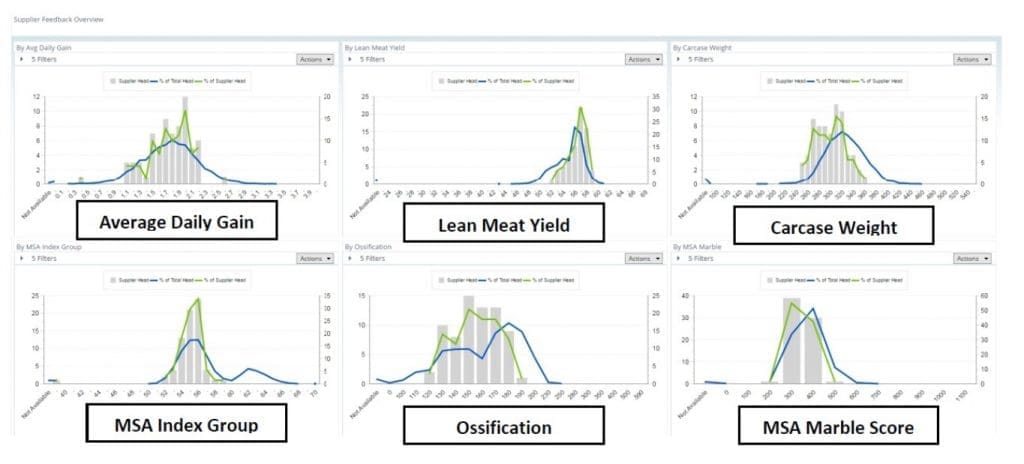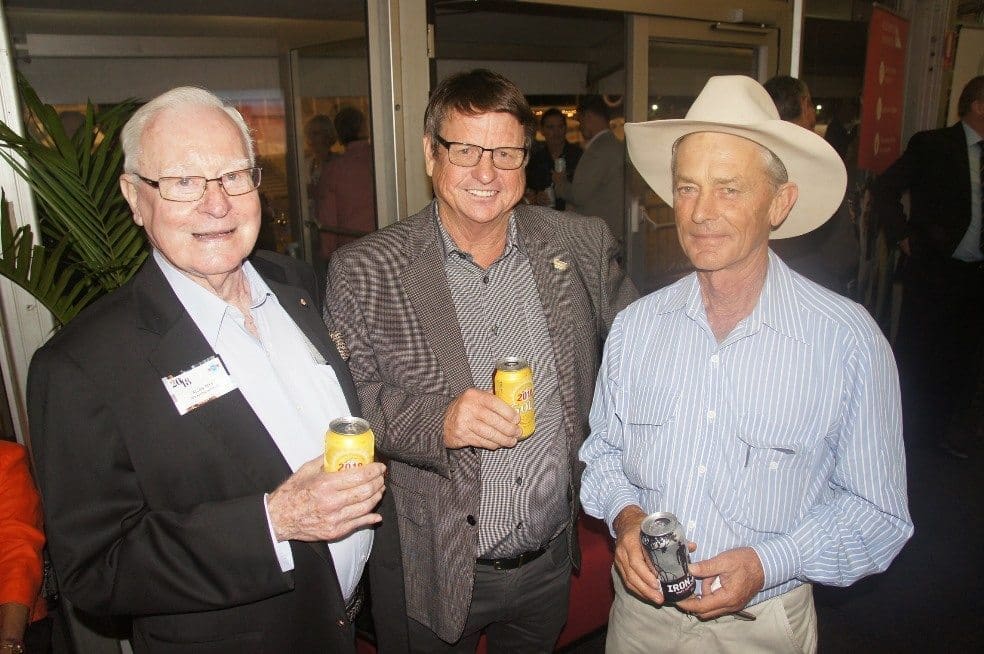IT’S not uncommon to hear producers who sell cattle into the feeder steer and heifer market complain that have never heard how their cattle have performed, either in the feedyard, or on the hooks in the chiller.
At best, they may have received daily weightgains and at worst, the last they hear of them is the induction weights.
This ‘disconnect’ in performance feedback in some grainfed beef programs is inevitably impacting on opportunity for genetic improvement.
Teys Australia is aiming to turn this around with their feeder steer feedback program which will allow producers to know exactly how their cattle have performed, not only in the feedlot but how they have killed out.
Jasmine Green (pictured below) is part of the Teys Australia strategic operations team based at Wagga Wagga, NSW, and talked about feeder steer feedback at Beef 2018.
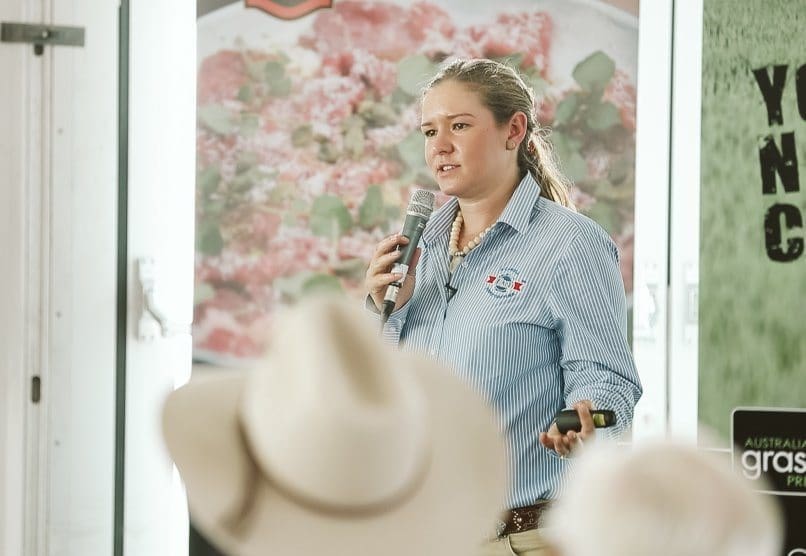 “We’ve had a number of our southern suppliers start to use these new reports, but we haven’t had a lot of producers that supply our northern feedlots utilise them yet,” Ms Green said.
“We’ve had a number of our southern suppliers start to use these new reports, but we haven’t had a lot of producers that supply our northern feedlots utilise them yet,” Ms Green said.
“That’s why we took the opportunity to present it as a session at Beef Week, and we’ve received some really positive feedback so far.”
Ms Green acknowledged that feeder cattle feedback was something the industry had not done very well in the past.
“As a producer, you sell cattle to the feedlot, the feedlot finishes them and sends them to the plant -and you guys (producers) probably don’t get a whole lot of information on how those cattle perform,” she told producers attending some of Teys’ mini-seminars.
“It is something we have tried to address ourselves.
“With the technology we have available, we have actually been able to develop a database to allow us to give you much better information and feed that back into your breeding programs.”
The stumbling block initially was being able to link the data collection systems used in the feedlot with those used in the processing plants, but this has now been overcome.
The link between the two systems will now allow buyers to put a trading name into a search engine and provide information on six different areas of cattle performance:
- Average daily gain
- Lean meat yield
- Carcase weight
- MS index
- Ossification
- MSA marbling
Ms Green said a producer’s cattle were benchmarked against other similar feeders in the feedlot, so they could determine how they performed and potentially make changes as a result of this feedback (example published below, with producer’s own results in green, benchmarked against overall cattle in blue.)
“This information we are hoping is going to give feedback in terms of things like genetics, to see if what you are selecting for gives you the performance we require in the feedlots, which will help make you a continued valued supplier for us,” she said.
One of the examples of how a producer could use information was the average daily gain.
“If you look at daily gain, you might see that your cattle have done better than normal distribution (of performance of all cattle),” she said. “If I was that producer, I would be drilling-down into this information to see if I can work out why these cattle have done so well.”
“Is it the genetics, is it do with how they were prepared differently or something else – and I would try to work out why these cattle performed better.”
Feedback is given on a group basis but can also be provided on individual animal performance.
“We can link back to RFID (tags) and combine that back with the genetics being used, and information on farm, to work out how a group of carcases are meeting the requirements at the other end,” Ms Green said.
It was the company’s Jindalee/Wagga feeder cattle trial, now going into its tenth year, which provided the impetus and the guidance on how to provide information back to feeder cattle suppliers.
“The feedlot trial came about and was created because we had producers asking for feedback before we started this system,” she said. “We had lots of really positive feedback from the trial, and it helped us to develop the feedback systems we can now offer.”
$626/head difference between best and worst teams
The trials have also been a stark example of just how different performance can be.
Ms Green said variation in performance was clearly demonstrated in the trial, as the cattle were all inducted on the same day, fed for the same amount of time on the same ration, and killed on the same day.
“In one trial, there was a $626/head difference between the top-performing and poorest-performing team,” she said.
“Being able to share information like this, and like our feeder cattle feedback, is really important.”
Mortalities also occur in the trial as they do in all feedlots, and this information could prove invaluable to those entrants.
“We had a team one year where one or two (of five entered) did not make it through due to respiratory issues, but this was still information for the entrant,” Ms Green said.
“Those producers looked at health protocols and implemented changes out of that so that was a real positive in going through trials like this.”
She encouraged all Teys feeder steer providers to talk to their livestock buyers, who all had access to the feeder cattle feedback information.
“We have gone back and put in as much information as possible, so there is at least two years’ worth of cattle information there,” she said.
They have also made it possible to transfer that information into farm software or download into a Microsoft Excel spreadsheet so producers can do their own analysis.
Ms Green encouraged as many regular suppliers as possible to take advantage of the new system.
“Feedback from feeder trials has shown that people are really interested in information and would like to use it to make better decisions on farm,” she said.
“It will help people make better decisions, so they can send better cattle, and more cattle can head into our branded programs.”
Teys says thanks to suppliers
Teys Australia hosted a lively cocktail party during Beef 2018 in Rockhampton, thanking cattle suppliers and other trade contacts for their support.
In a short address to the assembled gathering, chief executive Brad Teys emphasised the impact that technology would have on the company’s supply chain relationships in coming years. Here’s a selection of some faces from the gathering:
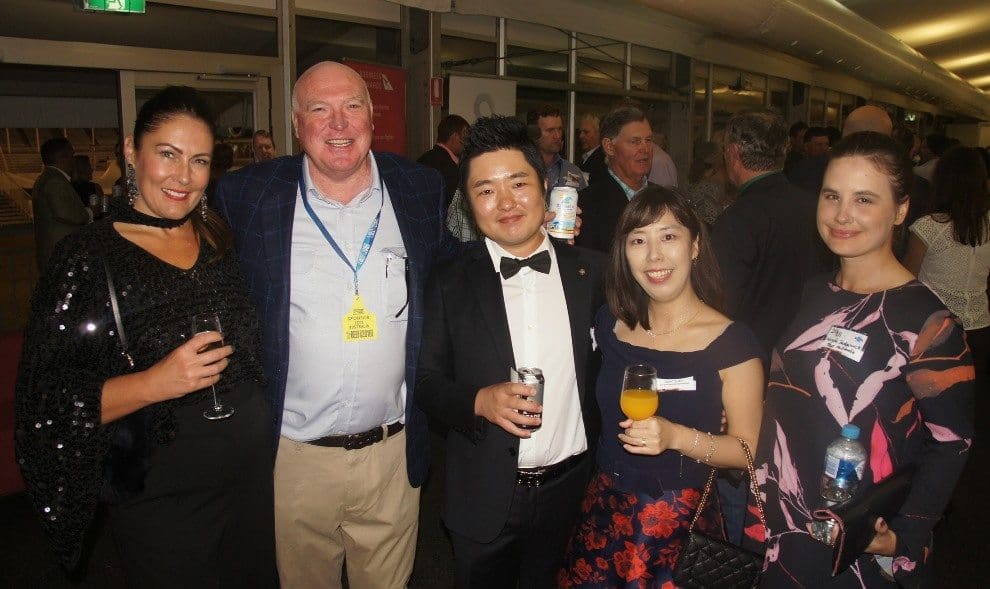
CEO Brad Teys and his wife Deborah with Gunjin Kim, Songyi Han and Nicole Sedgewick at the Rockhampton cocktail party
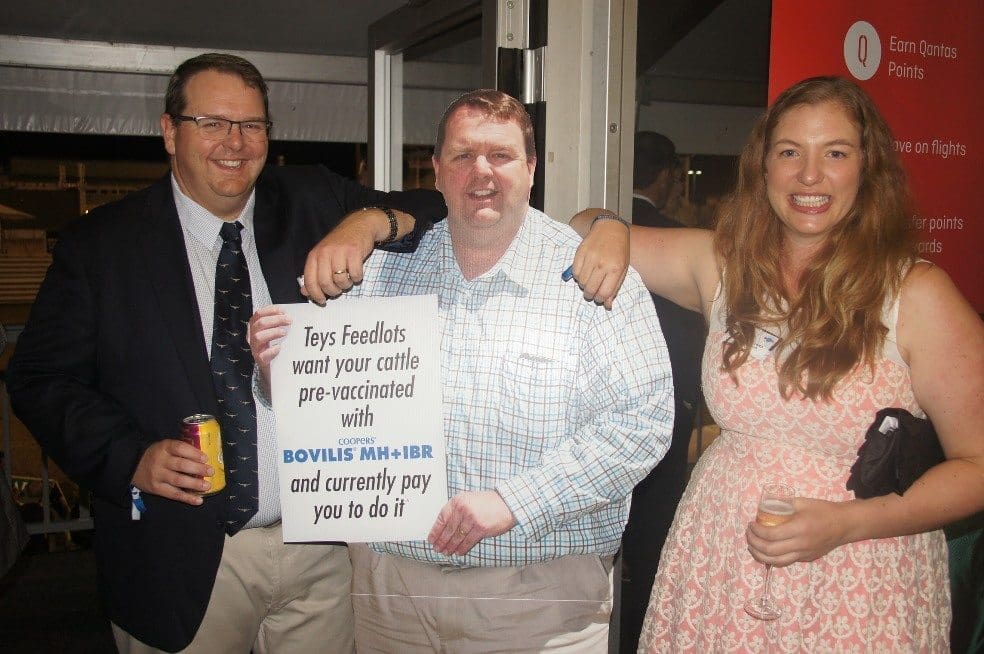
Spot the real Grant Garey…. Teys staff Grant Garey and Jessica Loughland with Grant’s cardboard-cut-out, used for BRD vaccine advertising, during the Rocky cocktail party
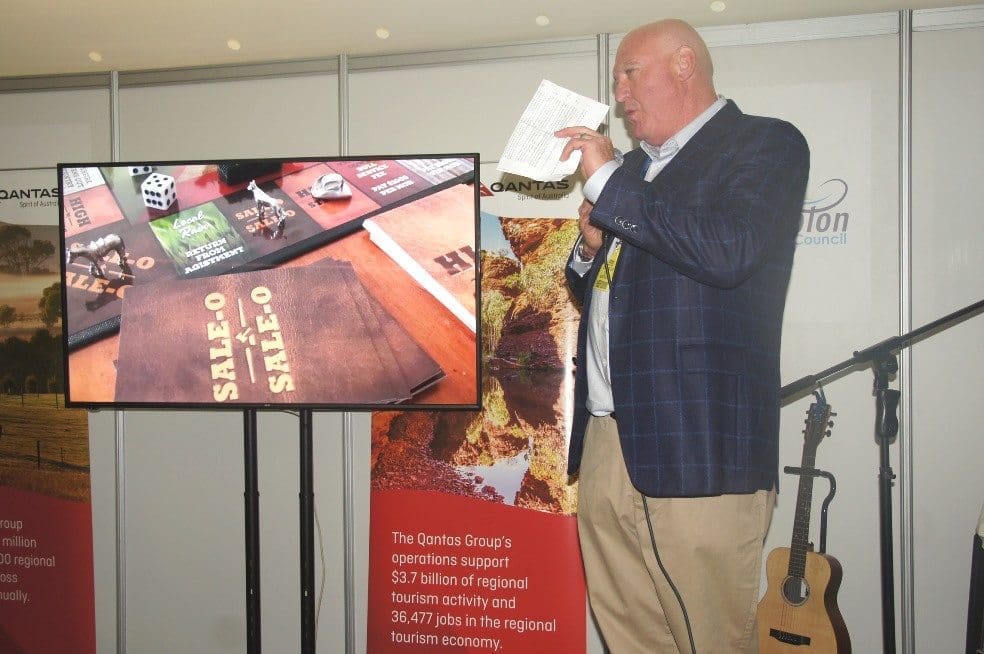
CEO Brad Teys addresses the Rockhampton cocktail party function.

